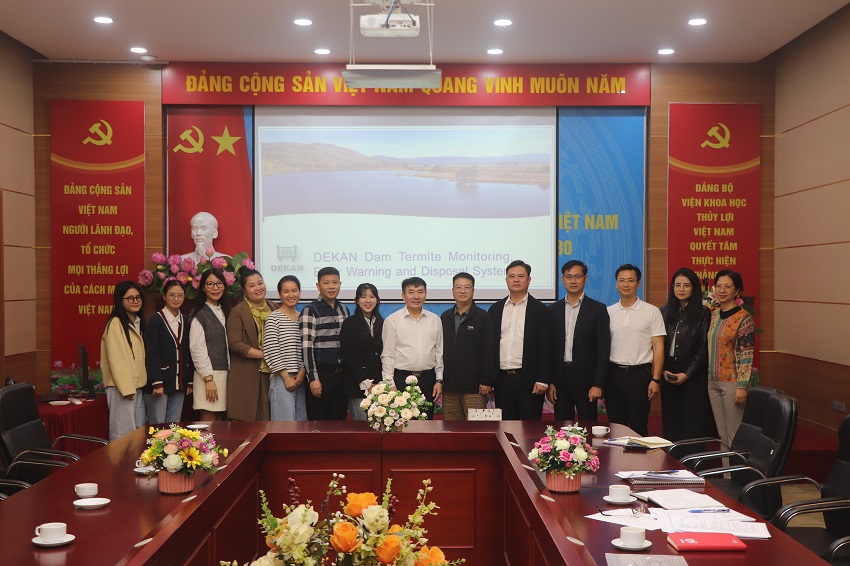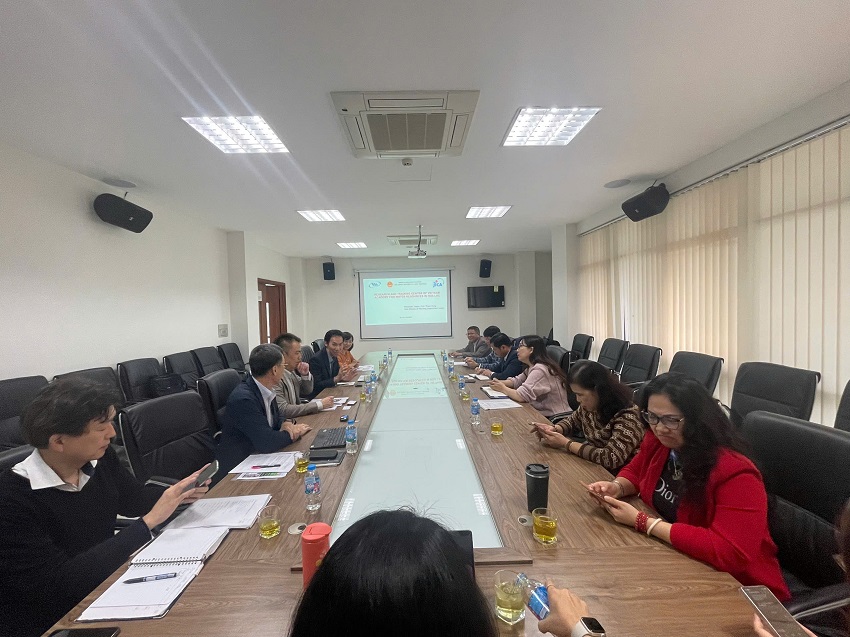Đánh giá thực trạng và giải pháp nghiên cứu về sạt lở đất ở Việt Nam giai đoạn 2010 - 2020
20/05/2022Việt Nam là quốc gia có địa hình đồi núi dốc và nằm trong vùng mưa nhiệt đới gió mùa, do đó sạt lở đất diễn ra khá phổ biến và được xếp vào loại thiên tai nguy hiểm. Các nghiên cứu về sạt lở đất đã được quan tâm thực hiện giúp ích trong công tác quản lý rủi ro, phòng chống thiên tai. Nghiên cứu này trình bày tổng quan các phương pháp đánh giá cấp độ sạt lở đất trên thế giới, từ đó đánh giá thực trạng nghiên cứu sạt lở đất ở Việt Nam trong giai đoạn từ 2010 đến 2020 và đề xuất những giải pháp nghiên cứu phù hợp tiếp theo. Kết quả chỉ ra rằng, phương pháp sử dụng phố biến trong đánh giá cấp độ sạt lở đất ở Việt Nam là đánh giá không gian bằng các mô hình xác suất thống kê. Bên cạch đó, những hạn chế về cơ sở dữ liệu của các yếu tố gây sạt lở vẫn chưa giải quyết triệt để. Những đề xuất nhằm cải thiện các hạn chế trên được thảo luận và định hướng cho các nghiên cứu tiếp theo.
1. GIỚI THIỆU CHUNG
2. THỰC TRẠNG NGHIÊN CỨU VỀ NGUY CƠ SẠT LỞ ĐẤT Ở VIỆT NAM
2.1. Khu vực nghiên cứu
2.2. Nguyên nhân gây sạt lở
2.3. Cấp độ, phương pháp nghiên cứu và mô hình đánh giá
3. NHỮNG TỒN TẠI VÀ HẠN CHẾ TRONG NGHIÊN CỨU SẠT LỞ ĐẤT Ở VIỆT NAM
4. ĐỀ XUẤT GIẢI PHÁP
5. KẾT LUẬN
TÀI LIỆU THAM KHẢO
[1] D. J. Varnes and D. M. Cruden, “Landslide types and processes,” Landslides Investig. mitigation, Transp. Res. Board Spec. Rep., vol. 247, 1996.
[2] D. J. Varnes, “Landslide hazard zonation: a review of principles and practice. Commission on landslides of the IAEG,” Nat. hazards, vol. 3, p. 61p, 1984.
[3] L. Highland, “Landslide types and processes,” 2004.
[4] P. Reichenbach, M. Rossi, B. D. Malamud, M. Mihir, and F. Guzzetti, “A review of statistically-based landslide susceptibility models,” Earth-Science Rev., vol. 180, pp. 60–91, 2018.
[5] M. J. Crozier, “Landslides: causes, consequences and environment, Croom Helm, London,” Geogr. Phys. Quat., vol. 7, no. 1, pp. 107–108, 1986.
[6] S. Abuzied, S. Ibrahim, M. Kaiser, and T. Saleem, “Geospatial susceptibility mapping of earthquake-induced landslides in Nuweiba area, Gulf of Aqaba, Egypt,” J. Mt. Sci., vol. 13, no. 7, pp. 1286–1303, 2016.
[7] F. Guzzetti, P. Reichenbach, M. Cardinali, M. Galli, and F. Ardizzone, “Probabilistic landslide hazard assessment at the basin scale,” Geomorphology, vol. 72, no. 1–4, pp. 272–299, 2005.
[8] A. Hansen, “Landslide hazard analysis,” Slope Instab., pp. 523–602, 1984.
[9] A. Hansen, C. A. M. Franks, P. A. Kirk, A. J. Brimicombe, and F. Tung, “Application of GIS to hazard assessment, with particular reference to landslides in Hong Kong,” in Geographical Information Systems in assessing natural hazards, Springer, 1995, pp. 273–298.
[10] R. K. Dahal, S. Hasegawa, A. Nonomura, M. Yamanaka, T. Masuda, and K. Nishino, “GISbased weights-of-evidence modelling of rainfall-induced landslides in small catchments for landslide susceptibility mapping,” Environ. Geol., vol. 54, no. 2, pp. 311–324, 2008.
[11] H. R. Pourghasemi, Z. T. Yansari, P. Panagos, and B. Pradhan, “Analysis and evaluation oflandslide susceptibility: a review on articles published during 2005–2016 (periods of 2005–2012 and 2013–2016),” Arab. J. Geosci., vol. 11, no. 9, p. 193, 2018.
[12] M. Alvioli and R. L. Baum, “Parallelization of the TRIGRS model for rainfall-induced landslides using the message passing interface,” Environ. Model. Softw., vol. 81, pp. 122–135, 2016.
[13] Y. Huang and L. Zhao, “Review on landslide susceptibility mapping using support vector machines,” Catena, vol. 165, pp. 520–529, 2018.
[14] A. M. Youssef, H. R. Pourghasemi, B. A. El-Haddad, and B. K. Dhahry, “Landslide susceptibility maps using different probabilistic and bivariate statistical models and comparison of their performance at Wadi Itwad Basin, Asir Region, Saudi Arabia,” Bull.Eng. Geol. Environ., vol. 75, no. 1, pp. 63–87, 2016.
[15] D. T. Bui, B. Pradhan, O. Lofman, I. Revhaug, and O. B. Dick, “Application of support vector machines in landslide susceptibility assessment for the Hoa Binh province (Vietnam) with kernel functions analysis,” 2012.
[16] N. C. Cong, N. Q. Binh, and V. N. D. Phuoc, “Landslide Susceptibility Mapping by Combining the Analytical Hierarchy Process and Regional Frequency Analysis Methods: A Case Study for Quangngai Province (Vietnam),” in International Conference on Asian and Pacific Coasts, 2019, pp. 1327–1334.
[17] D. T. Bui, T. A. Tuan, H. Klempe, B. Pradhan, and I. Revhaug, “Spatial prediction models for shallow landslide hazards: a comparative assessment of the efficacy of support vector machines, artificial neural networks, kernel logistic regression, and logistic model tree,” Landslides, vol. 13, no. 2, pp. 361–378, 2016.
[18] B. T. Pham, D. T. Bui, H. V. Pham, H. Q. Le, I. Prakash, and M. B. Dholakia, “Landslide hazard assessment using random subspace fuzzy rules based classifier ensemble and probability analysis of rainfall data: a case study at Mu Cang Chai District, Yen Bai Province (Viet Nam),” J. Indian Soc. Remote Sens., vol. 45, no. 4, pp. 673–683, 2017.
[19] P. Van Hung, “RISK ASSESSMENT OF DAMAGE CAUSED BY LANDSLIDE IN THE Sci., vol. 36, no. 2, pp. 108–120, 2014.
[20] D. T. Bui, B. Pradhan, I. Revhaug, D. B. Nguyen, H. V. Pham, and Q. N. Bui, “A novel hybrid evidential belief function-based fuzzy logic model in spatial prediction of rainfallinduced shallow landslides in the Lang Son city area (Vietnam),” Geomatics, Nat. Hazards Risk, vol. 6, no. 3, pp. 243–271, 2015.
[21] P. T. Nguyen et al., “Development of a novel hybrid intelligence approach for landslide spatial prediction,” Appl. Sci., vol. 9, no. 14, p. 2824, 2019.
[22] B. T. Pham et al., “A novel intelligence approach of a sequential minimal optimization-based support vector machine for landslide susceptibility mapping,” Sustainability, vol. 11, no. 22, p. 6323, 2019.
[23] D. Van Dao et al., “A spatially explicit deep learning neural network model for the prediction of landslide susceptibility,” Catena, vol. 188, p. 104451, 2020.
[24] F. Guzzetti, P. Reichenbach, F. Ardizzone, M. Cardinali, and M. Galli, “Estimating the quality of landslide susceptibility models,” Geomorphology, vol. 81, no. 1–2, pp. 166–184, 2006.
[25] D. T. Bui, B. Pradhan, O. Lofman, I. Revhaug, and Ø. B. Dick, “Regional prediction of landslide hazard using probability analysis of intense rainfall in the Hoa Binh province, Vietnam,” Nat. hazards, vol. 66, no. 2, pp. 707–730, 2013.
________________________________________________________________________________________________
Chi tiết bài báo xem tại đây: Đánh giá thực trạng và giải pháp nghiên cứu về sạt lở đất ở Việt Nam giai đoạn 2010 - 2020
Đoàn Viết Long, Nguyễn Chí Công, Nguyễn Quang Bình
Trường Đại học Bách khoa, Đại học Đà Nẵng
Nguyễn Tiến Cường
Trường Đại học Phenikaa
TẠP CHÍ KH&CN THỦY LỢI
Ý kiến góp ý:













